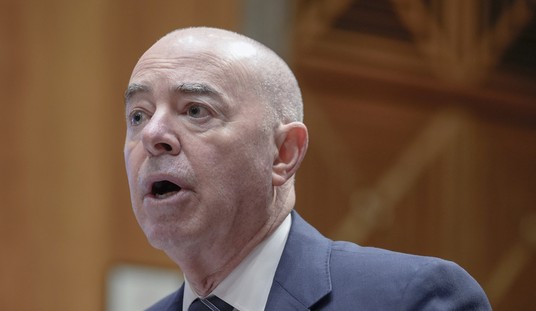In the first place, I would like to observe that the older generation had certainly pretty well ruined this world before passing it on to us. They give us this Thing, knocked to pieces, leaky, red-hot, threatening to blow up; and then they are surprised that we don’t accept it with the same attitude of pretty, decorous enthusiasm with which they received it…
— John F. Carter, “’These Wild Young People’ by One of Them,” in the Atlantic Monthly, 1920.
Stop me if you’ve heard this one before. In the first years of a new decade filled with technological wonders, American troops are returning home from an overseas war that was promoted as saving democracy – democracy as it was currently understood – abroad. Concurrently, self-styled progressives, hoping to transform the world into a utopian vision of Heaven on Earth, wake up each day thinking, “What can we ban today?” The wealthiest one percent create enclaves in which the laws that they force upon everyone else don’t apply to them. And a corrupt if charismatic politician seeks to find ways, via his cronies, to exploit this enormous rift in what is thought by the masses to be a free market.
America today? No, America in 1920, as prohibition begins to sink its ugly claws into the decade.
It’s easy to see how Boardwalk Empire was green-lighted at HBO. The Sopranos, focusing on a ruthless, albeit relatively minor wannabe-Godfather, was a huge hit a decade ago. AMC’s Mad Men, which was created by one of the Sopranos’ producers, is a cult favorite and hit with the critics. Why not hire another Sopranos producer and create another crime show set in New Jersey, but with the same sort of boomer-tinged historical triumphalism that fuels Mad Men?
In the opening titles of Boardwalk Empire, set to menacing, vaguely surf-rock sounding electric guitars, an infinite number of Canadian whisky bottles wash ashore while Steve Buscemi as Enoch “Nucky” Thompson, the show’s answer to Tony Soprano, scans the horizon. If there are any messages in these bottles, it’s a reminder that the past is a foreign country, its people increasingly incapable, in the eyes of the Boomers, of having gotten anything right.
Louisiana North
To be fair though, Atlantic City hit the skids long before the 21st century. When I was a kid living in South Jersey, the prospect of an hour and a half car ride to Atlantic City always left me with a feeling of melancholy. A long car ride down route 295 and then 45 minutes on the Atlantic City Expressway, terminated in passing by numerous clapped out seaside homes, on the way to the Boardwalk itself, just before casino gambling was legalized by New Jersey and slightly revitalized the area. Slightly.
 But Atlantic City in the 1920s, at least as imagined by HBO, is a sight to behold, with rich swells intermingling with down and out immigrants, and an endlessly variety of storefronts, fortune tellers, and carnival barkers. I’m happy to see the first season of Boardwalk released on DVD and Blu-Ray from HBO. I got hooked on the show in November, when it seemed to be on a continuous loop on HBO while I was back in a very different New Jersey than the one depicted in Boardwalk.
But Atlantic City in the 1920s, at least as imagined by HBO, is a sight to behold, with rich swells intermingling with down and out immigrants, and an endlessly variety of storefronts, fortune tellers, and carnival barkers. I’m happy to see the first season of Boardwalk released on DVD and Blu-Ray from HBO. I got hooked on the show in November, when it seemed to be on a continuous loop on HBO while I was back in a very different New Jersey than the one depicted in Boardwalk.
Or maybe not so different; there’s a reason why John Fund wrote an essay for the Wall Street Journal in 2004 titled “Louisiana North” calling New Jersey a “pit of corruption.” Whatever reforms current governor and GOP superstar Chris Christie is capable of, he’s got his work cut out for him.
But then, that’s long been true. In TV’s Boardwalk Empire, the mayor is a figurehead. The man who makes the resort town go is its treasurer, the character played by Buscemi, and based on a real life-life figure, Enoch L. Johnson, who lived from 1883 to 1968 – and who looked nothing like the actor playing him.
Of course, changing Nucky’s last name and fictionalizing him also means that there are no guarantees that Buscemi’s character will live as long as his real-life inspiration. Boardwalk Empire is vaguely reminiscent of the quasi-historical conceit behind novels such as E. L. Doctorow’s Ragtime. Or heck, the Desilu production of The Untouchables, starring Robert Stack. Similarly, Buscemi’s character meets plenty of real-life figures, including, during the pilot, Arnold Rothstein, Lucky Luciano, and Al Capone in the early stages of their own extralegal empires.
Industrial Light and Whiskey
The 1920s was an era that was fascinated by new technologies – mainly because they were emerging so quickly, even though much of America in the 1920s was still rural and underdeveloped. But the 1920s saw Lindbergh reach Paris in a one-man airplane, the birth of the first commercial radio networks (the direct predecessors to the Big Three TV networks), and Hollywood reach international prominence, albeit through silent movies. At least in the episodes of Boardwalk that I’ve watched, there haven’t been any nudges to the viewer’s ribs along the lines of Mad Men’s Joan warning Peggy “Now try not to be overwhelmed by all this technology. It looks complicated, but the men who designed it made it simple enough for a woman to use” – while pulling the dustcover off of an IBM Selectric typewriter.
In contrast to the simple technology of the era it portrays, the technology to produce Boardwalk Empire is monumental in comparison. The actual boardwalk set is a 300-foot long set built on an empty lot in Brooklyn. But the buildings constructed for the show are only a couple of stories high, just enough to photograph the actors walking past them. Everything above the storefronts is greenscreened in, including the billboards of the era. The Atlantic Ocean, which Nucky looks wistfully into from time to time in the pilot, is a digital effect as well.
And there are the costumes. I found the suits worn by Nucky and the gangsters in Boardwalk to be incredibly off-putting at first. While the producers claim that Nucky’s look was inspired by the Duke of Windsor, one of the great 1920s fashion icons, the end result looks awfully affected to modern eyes; a sort of 21st century version of Guys & Dolls. But then, 1920s fashions are often a challenge for film TV productions – Tom Wolfe once referred to the Robert Redford version of The Great Gatsby as Fitzgerald interpreted by the Garment District, with 1920s characters wearing very 1970s wide-lapelled Ralph Lauren suits. Boardwalk seems to have at least learned that lesson; you quickly get used to its fashion choices.
Martin Scorsese directed the pilot of Boardwalk Empire, but don’t get too excited. While it’s nicely paced, with DeNiro and the rest of the Scorsese repertory troop nowhere to be found, it’s a more workman-like effort. Think The Color of Money, instead of the second coming of Mean Streets, Taxi Driver or Goodfellas.
Finally, there’s Steve Buscemi, the star of Boardwalk Empire. James Gandolfini in the role of Tony Soprano was a perfect casting choice, which made an otherwise extremely unpalatable character absolutely magnetic to watch. Jon Hamm, Brylcreemed to perfection in his gray flannel Brooks Brothers suit as Don Draper, is a stylish throwback to the days of Cary Grant and Rock Hudson. Building a show around Steve Buscemi is rather brave, seeing as he’s definitely much more of an acquired taste as a leading man, with his acting tics, sad eyes, craggy shark’s teeth and his rubbery face.
But then, the producers of Boardwalk Empire seem to specialize in damaged faces: in the pilot, we meet a young Al Capone, with a pair of very realistic looking scars on his face, acquired in a knife-fight in his early days as a bouncer. One of the more intriguing characters is Richard Harrow, (portrayed by Jack Huston) vaguely reminiscent of the Two-Face character from Batman. Harrow wears a metal mask over half his face, to hide the horrific wounds he received in World War I.
(Perhaps to offset the accumulated weight of all of the damaged faces, there’s Julianne Nicholson, virtually unrecognizable from her role as Chris Noth’s tomboy partner on Law & Order: Criminal Intent. She was added in Boardwalk’s second season to play a character based on likely the only woman serving as a U.S. Assistant Attorney General in the 1920s.)
The show’s brilliant production design, solid casting, and the exoticism of the historical setting help to minimize the occasional formulaic plots, particularly after the pilot. Later episodes feature stories built around plenty of formulaic grifters, grafters, and stolid cops looking to put bootleggers behind bars. All of which starts to lend an occasional “I think I’ve seen this all before” tone to the proceedings. But then, great television is taking well-tread elements and tossing them into a new recombinant formula. (Parents beware: there’s plenty of gratuitous F-bombs and occasional nudity, just to remind you that we’re not in basic cable anymore.)
Is Boardwalk Empire worth watching? If you’ve missed The Sopranos, you can definitely get your fix here. Boardwalk may lack the immediacy of its modern-era HBO forerunner, and the sixties Rat Pack-era swank of Mad Men. But it’s stylish in its own right, focusing on a period and location rarely explored by television. That, along with Buscemi’s acting quirks, makes it oddly hypnotic. Sure, it’s black armband “look how ugly America was before we Boomers arrived to set things straight” history. But the knockout production design and Untouchables on the beach-style atmosphere, particularly in the beautifully mastered new DVD, make it all go down as smooth as a shot of Canadian Rye.










Join the conversation as a VIP Member